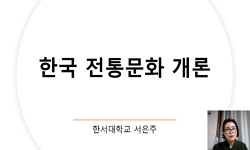A Comparative Study on Protection Policies for Intangible Cultural Heritages between Korea and China Zhang Mei Na Sungkyunkwan University A fact that culture comes to exert the most important influence in the international society for the cultural cen...
http://chineseinput.net/에서 pinyin(병음)방식으로 중국어를 변환할 수 있습니다.
변환된 중국어를 복사하여 사용하시면 됩니다.
- 中文 을 입력하시려면 zhongwen을 입력하시고 space를누르시면됩니다.
- 北京 을 입력하시려면 beijing을 입력하시고 space를 누르시면 됩니다.

한·중 무형문화유산 보호정책 비교연구 = A Comparative Study on Protection Policies for Intangible Cultural Heritages between Korea and China
한글로보기부가정보
다국어 초록 (Multilingual Abstract)
A Comparative Study on Protection Policies for Intangible Cultural Heritages between Korea and China Zhang Mei Na Sungkyunkwan University A fact that culture comes to exert the most important influence in the international society for the cultural century is not new. In particular, It? safe to say that the interest in the intangible cultural heritage is the recently international flow. And, the interest of non-Western countries in the intangible cultural heritage is higher than the Western countries.
This study carried out the research on protection policies for intangible cultural heritages of Korea and China, which is multiracial. Korea? protection policy for intangible cultural properties was arranged the legal and institutional foundation as「Cultural Properties Protection Act」had been enacted in 1962. Thus, the protection for intangible cultural properties has been carried out in the national dimension, and now became the advanced level enough for the international society to pay attention. On the other hand, from having joined in ?onvention for the Safeguarding of the Intangible Cultural Heritage?in UNESCO in 2004, China accelerated the protection for the intangible cultural heritage by substituting the intangible cultural heritage for the name of the racial-private culture, which had been included in the existing culture protection law. Korea and China are the countries that are involved in the same Orient, but have mutually different protection background and real situation for intangible cultural heritages. Thus, through this research, it aimed to seek for the better protection policies for the intangible cultural heritages in two countries hereafter by analyzing the protection policies for the intangible cultural heritages in two countries and by grasping the characteristics of the protection policies for the intangible cultural heritages in two countries.
This study analyzed the protection policy for the intangible cultural heritages in two countries after examining the present status of protection for the intangible cultural heritages in two countries, which are now being protected in the national dimension, based on the background and formation process of protection for the intangible cultural heritages in Korea and China.
The protection policy for the intangible cultural heritage needs to be the one that aims to observe and keep, and to check the spirit of effective preservation and transmission. That is because the protection policy for the intangible cultural heritage should be the base manure as the policy, which can form the excellent spiritual culture in high-dimensional society.
The 21st century is the one of culture. Amid globalization in which the restriction to time and space gradually disappears, each country is experiencing the culture war, with already having surpassed the culture competition. It is the so-called era of culture hegemony. In the midst of this flow, it tried to have the opportunity that inspects the protection policies for the intangible cultural heritages in both Korea and China, which show difference while having a close relationship geographically and historically. Especially in light of the reality that this research is not performed much, the more follow-up studies need to perform the deeper comparative analysis. And, this is thought to be capable of contributing not only to the development in own country? culture, but also to the development in world culture by offering new imagination to the global people.
동일학술지(권/호) 다른 논문
-
영화 「탱고 레슨」 춤 장면에서 나타나는 여성의 역할 분석
- 한국무용예술학회
- 김주희
- 2008
- KCI등재후보
-
- 한국무용예술학회
- 김정숙
- 2008
- KCI등재후보
-
- 한국무용예술학회
- 배수을
- 2008
- KCI등재후보
-
- 한국무용예술학회
- 정희자
- 2008
- KCI등재후보
분석정보
인용정보 인용지수 설명보기
학술지 이력
| 연월일 | 이력구분 | 이력상세 | 등재구분 |
|---|---|---|---|
| 2027 | 평가예정 | 재인증평가 신청대상 (재인증) | |
| 2021-01-01 | 평가 | 등재학술지 유지 (재인증) |  |
| 2018-01-01 | 평가 | 등재학술지 유지 (등재유지) |  |
| 2015-01-01 | 평가 | 등재학술지 유지 (등재유지) |  |
| 2014-10-22 | 학회명변경 | 영문명 : 미등록 -> The Korean Society for Dance Studies |  |
| 2011-01-01 | 평가 | 등재학술지 선정 (등재후보2차) |  |
| 2010-01-01 | 평가 | 등재후보 1차 PASS (등재후보1차) |  |
| 2009-01-01 | 평가 | 등재후보 1차 FAIL (등재후보2차) |  |
| 2008-01-01 | 평가 | 등재후보 1차 PASS (등재후보1차) |  |
| 2007-01-01 | 평가 | 등재후보학술지 유지 (등재후보2차) |  |
| 2006-01-01 | 평가 | 등재후보 1차 PASS (등재후보1차) |  |
| 2004-01-01 | 평가 | 등재후보학술지 선정 (신규평가) |  |
학술지 인용정보
| 기준연도 | WOS-KCI 통합IF(2년) | KCIF(2년) | KCIF(3년) |
|---|---|---|---|
| 2016 | 0.51 | 0.51 | 0.53 |
| KCIF(4년) | KCIF(5년) | 중심성지수(3년) | 즉시성지수 |
| 0.51 | 0.52 | 0.698 | 0.29 |




 KCI
KCI KISS
KISS






